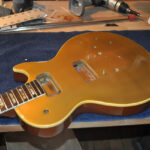The guitar intro to “Hotel California” is instantly recognizable, and many guitarists aspire to recreate its rich, harmonized sound. However, perfectly duplicating those iconic guitar chords is more complex than it might seem. It’s not just about knowing the chords themselves, but understanding the intricacies of how they are played and harmonized.
The challenge lies in chord inversions. Let’s take the first chord, Bm (B minor). Instead of simply playing B, D, and F#, the guitars in “Hotel California” use different inversions. One guitar might play D, B, F#, while another plays F#, D, B. This means each guitar is voicing the Bm chord in a unique way, creating a layered harmony that’s difficult to replicate with a simple harmonizer pedal set to a B minor scale.
The second chord, F#7 (F sharp dominant 7th), presents a similar issue. One guitar could be playing C#, Bb, F#, while the other adds the 7th, playing E, C#, Bb. Again, the harmonization isn’t based on a simple scale; it’s about specific chord tones and their inversions.
Trying to use a standard harmonizer that relies on scales, like Bm pentatonic (B, D, E, F#, A), won’t work. If you play a D note, the harmonizer might generate an F#, but if you play a B, it might harmonize to an E instead of the desired D, and an F# could become a B. The intervals are not fixed to the chord structure. You’d need a harmonizer sophisticated enough to recognize chords and harmonize based on chord tones, not just scales.
While effects like a whammy pedal might offer a creative workaround for bending individual notes to achieve a harmonic effect, they don’t solve the core issue of complex chord inversions across multiple guitar parts. The “Hotel California” guitar harmony is a carefully constructed arrangement involving multiple guitars playing specific inversions of each chord. It’s a testament to the artistry and arrangement that goes into creating such an iconic and seemingly simple guitar part.
Achieving a close approximation of the “Hotel California” guitar chords is possible, but capturing the exact nuance of the original recording requires a deep understanding of chord voicings and harmonization techniques that go beyond simple scale-based harmonizers. It’s a challenge that highlights the depth and complexity hidden within even the most beloved guitar riffs.


